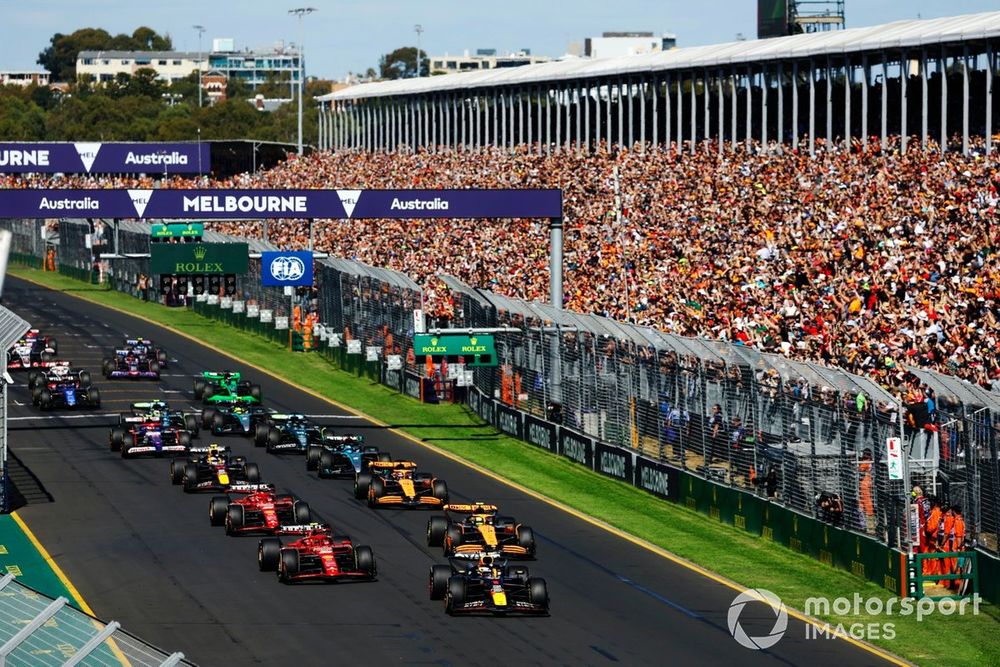As revealed by Autosport over the Chinese Grand Prix weekend, teams last week discussed a tweak to the regulations to clear up an aspect of the regulations that had caused unease.
Previously, jump starts were judged entirely on whether or not the FIA-supplied sensors fitted to cars had picked up movement before the start signal was given.
However, there had been some occasions when cars had appeared to not be stationary prior to the race starting but were not punished because the sensors gave them the all-clear.
The most recent famous example of this was Lando Norris at this year’s Saudi Arabian Grand Prix, who moved forward briefly before stopping ahead of the lights going out. Although his actions were investigated by the stewards, it was decided that, since the sensor had not detected anything untoward, then there were no grounds to sanction him.
Following discussions among sporting directors and team bosses at last week’s F1 Commission meeting, it has now been agreed that the regulations will be tightened up with immediate effect.
A revised Article 48 of F1’s Sporting Regulations has been labelled “False Start” and lays out how rule breaches will now be judged.
The wording that previously stated jump starts would be determined by the findings of the transponder has been removed.
Photo by: Glenn Dunbar / Motorsport Images
Instead, a revised 48.1 a) of the Sporting Regulations states that an offence will be deemed to have taken place if a driver is judged to have: “moved after the four (4) second light is illuminated and before the start signal is given by extinguishing all red lights.”
While Norris’ movement in Saudi Arabia is the most recent example, several drivers have been picked up in recent years for having appeared to move before lights went out but not triggering the sensor.
Valtteri Bottas was cleared for a jump start in the 2020 Hungarian Grand Prix while one year earlier, then Ferrari driver Sebastian Vettel similarly escaped punishment in Japan.
Returning intermediate tyres
The revised sporting regulations that have been published by the FIA have also included a clause aimed at encouraging teams to use intermediate tyres in rain-hit practice sessions.
At the Japanese Grand Prix last month, a flaw in the current wet tyre rules meant that teams almost all steered clear of running in the rain-hit second free practice session because they did not want to burn through sets of inters that they…
Click Here to Read the Full Original Article at Autosport.com – Formula 1 – Stories…

